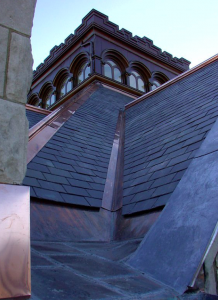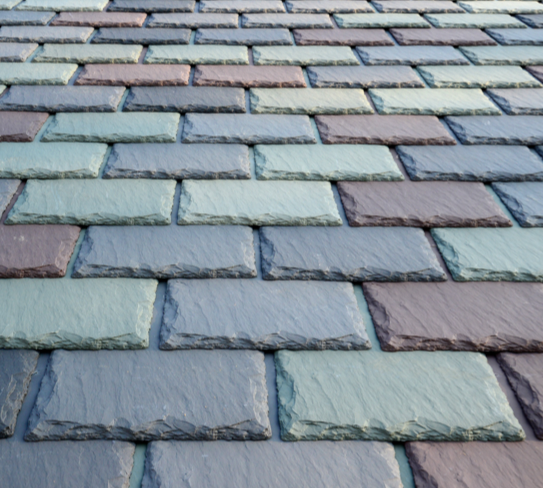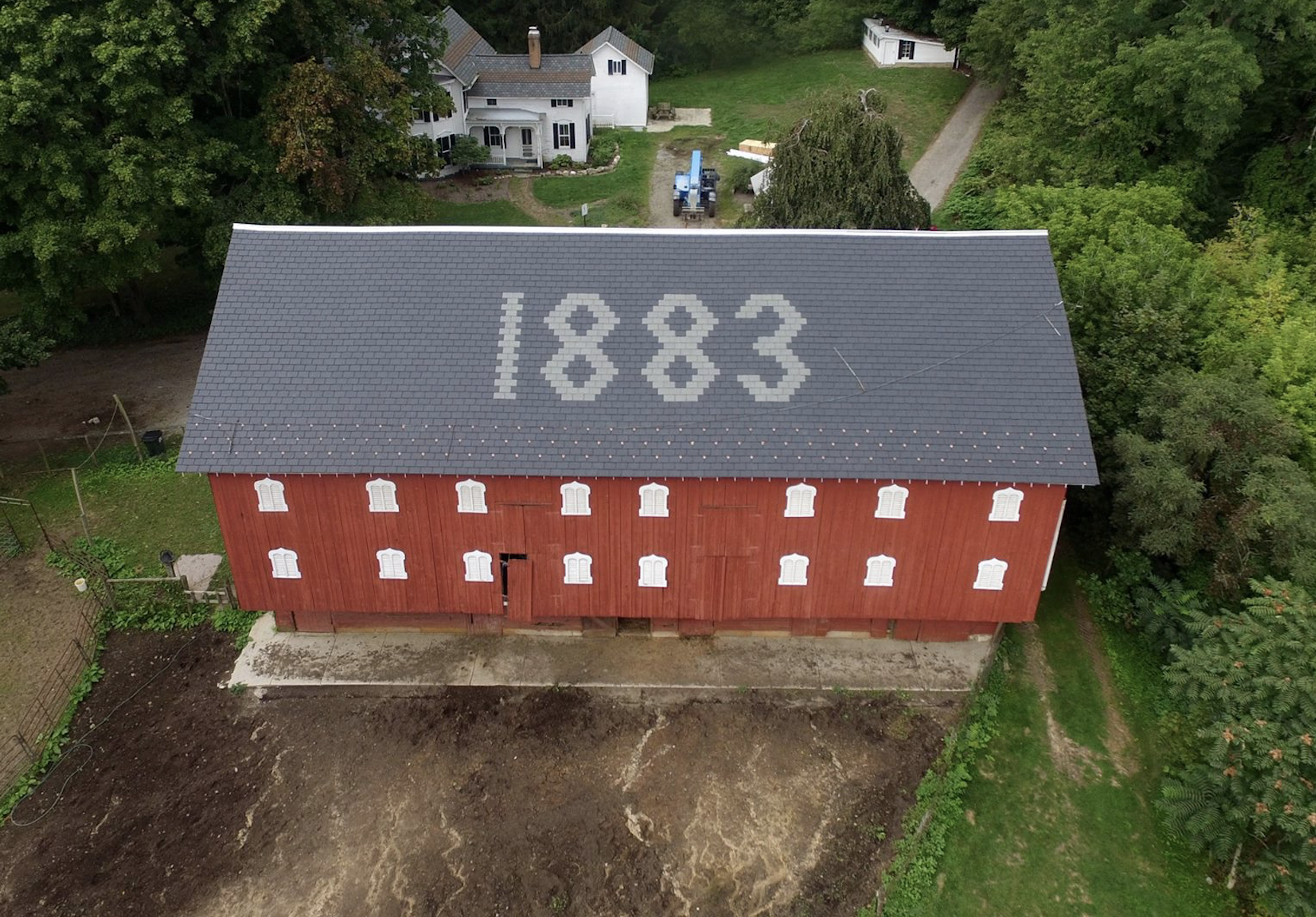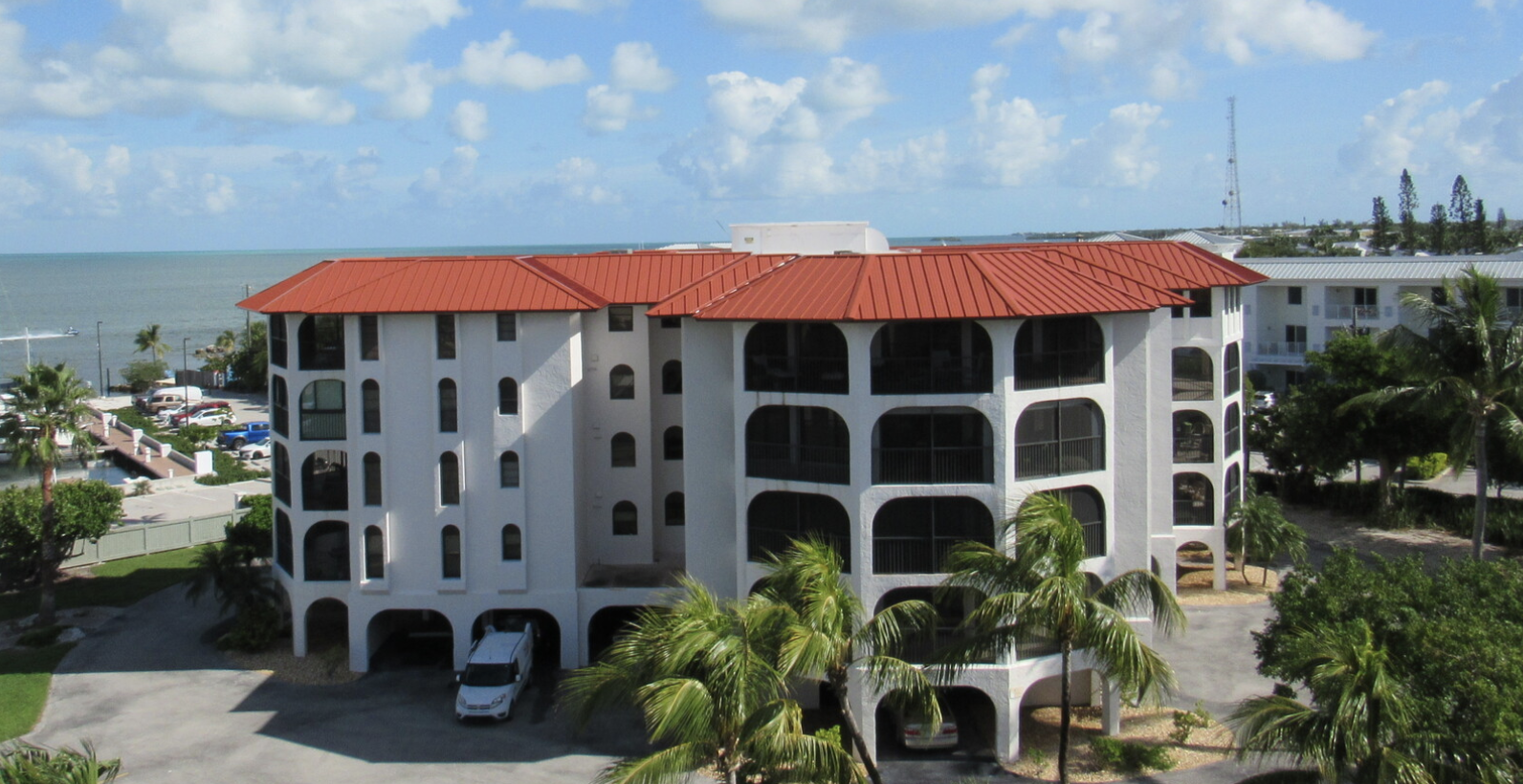The most interesting slate contractor I met while in Charleston was from Wales. He was a member of a family slate roofing business that was established in the 1400s, and he was replicating a slate roof for a homeowner who had found very old paperwork showing his Welsh slate roof had been installed by Welsh slaters.
I spent the next few weeks picking his brain and watching his crew’s every move. I figured that anyone who came from 500 years of slating experience knew something about the subject. This is where I learned the importance of sorting slate prior to installation. Slate comes from the quarry in slightly different thicknesses; if you just pull off the pallet and nail, you’ll wind up with a very uneven roof with thick slates next to thin slates. I’ve always thoroughly enjoyed talking with the “old timers” and getting tips and data, as well as restoring very old properties to learn from past installation techniques. In fact, my team restored the roof of a building built in 1759. The idea that I was restoring a building that predated the Revolutionary War was stunning and wonderful.

The First Congregational Church, Akron, Ohio, includes a Vermont Mottled Green and Purple roof with decorative copper.
Four years later, Hurricane Fran brought me back to the Carolinas; this time to restore slate roofs in Durham, Raleigh and Wilmington. Again, we worked on some of the most historic and beautiful buildings in the area and learned from our predecessors. For example, a Buckingham slate roof on the Temple of Israel in Wilmington featured a wood deck of basically large trees that were very roughly cut and assembled with bark intact. The Buckingham slate that was installed in 1876 was still in perfect condition after 120 years. The steel-cut nails had rusted, allowing large patches of slate to be blown off.
Lasting Impression
These old natural slate roofs are truly magnificent and deserve to be restored. The idea that slates last a century or more speaks volumes for the old tried-and-true materials. With natural slate roofing, we are maintaining the historical fabric of our nation while adding to the aesthetics of our buildings. In addition, slate is an environmental material: It comes from the ground and, after its useful life, can go back into ground without any ill effects.
The most important thing I’ve learned about using slate in the Carolinas is that installation must take into account the possibility of hurricane-force winds. This is best approached by using copper nails instead of ferrous nails; stainless-steel hooks, such as the Qwik slate method that uses a traditional lap; or foam, such as Polyfoam, which typically is used with tile roofing but can work with slate and has been approved to Miami-Dade specs for wind speeds in excess of 150 mph.
However, even with the correct materials, every slate roof should be installed by a slater—someone who installs slate every day. This will ensure our beautiful slate roofs and historical buildings will last for future generations to enjoy.
More Information
Preservation Brief 29, “The Repair, Replacement, and Maintenance of Historic Slate Roofs,” by Jeffrey S. Levine
National Slate Association





That’s a really good article. I remember working in Charleston after Hugo, and seeing some of that old slate roofing going on. Keep up the good work!!